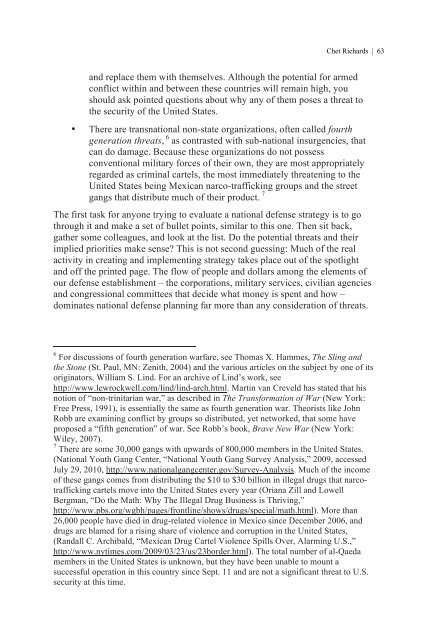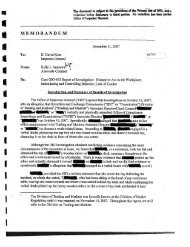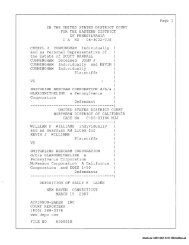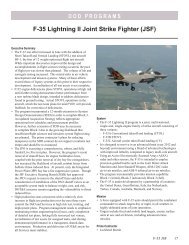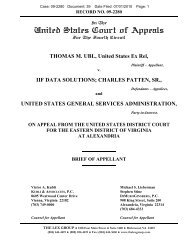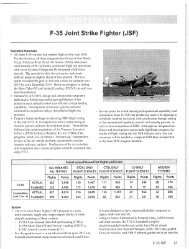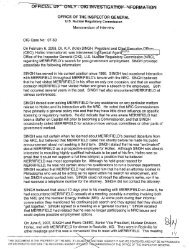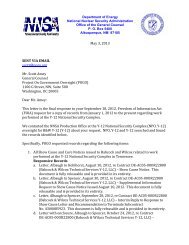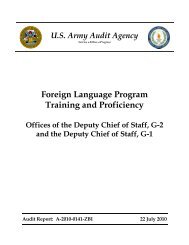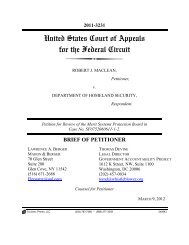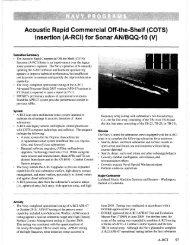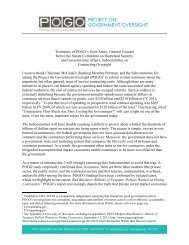The Pentagon Labyrinth
The Pentagon Labyrinth
The Pentagon Labyrinth
You also want an ePaper? Increase the reach of your titles
YUMPU automatically turns print PDFs into web optimized ePapers that Google loves.
Chet Richards | 63<br />
and replace them with themselves. Although the potential for armed<br />
conflict within and between these countries will remain high, you<br />
should ask pointed questions about why any of them poses a threat to<br />
the security of the United States.<br />
• <strong>The</strong>re are transnational non-state organizations, often called fourth<br />
generation threats, 6 as contrasted with sub-national insurgencies, that<br />
can do damage. Because these organizations do not possess<br />
conventional military forces of their own, they are most appropriately<br />
regarded as criminal cartels, the most immediately threatening to the<br />
United States being Mexican narco-trafficking groups and the street<br />
gangs that distribute much of their product. 7<br />
<strong>The</strong> first task for anyone trying to evaluate a national defense strategy is to go<br />
through it and make a set of bullet points, similar to this one. <strong>The</strong>n sit back,<br />
gather some colleagues, and look at the list. Do the potential threats and their<br />
implied priorities make sense? This is not second guessing: Much of the real<br />
activity in creating and implementing strategy takes place out of the spotlight<br />
and off the printed page. <strong>The</strong> flow of people and dollars among the elements of<br />
our defense establishment – the corporations, military services, civilian agencies<br />
and congressional committees that decide what money is spent and how –<br />
dominates national defense planning far more than any consideration of threats.<br />
6 For discussions of fourth generation warfare, see Thomas X. Hammes, <strong>The</strong> Sling and<br />
the Stone (St. Paul, MN: Zenith, 2004) and the various articles on the subject by one of its<br />
originators, William S. Lind. For an archive of Lind’s work, see<br />
http://www.lewrockwell.com/lind/lind-arch.html. Martin van Creveld has stated that his<br />
notion of “non-trinitarian war,” as described in <strong>The</strong> Transformation of War (New York:<br />
Free Press, 1991), is essentially the same as fourth generation war. <strong>The</strong>orists like John<br />
Robb are examining conflict by groups so distributed, yet networked, that some have<br />
proposed a “fifth generation” of war. See Robb’s book, Brave New War (New York:<br />
Wiley, 2007).<br />
7 <strong>The</strong>re are some 30,000 gangs with upwards of 800,000 members in the United States.<br />
(National Youth Gang Center, “National Youth Gang Survey Analysis,” 2009, accessed<br />
July 29, 2010, http://www.nationalgangcenter.gov/Survey-Analysis. Much of the income<br />
of these gangs comes from distributing the $10 to $30 billion in illegal drugs that narcotrafficking<br />
cartels move into the United States every year (Oriana Zill and Lowell<br />
Bergman, “Do the Math: Why <strong>The</strong> Illegal Drug Business is Thriving,”<br />
http://www.pbs.org/wgbh/pages/frontline/shows/drugs/special/math.html). More than<br />
26,000 people have died in drug-related violence in Mexico since December 2006, and<br />
drugs are blamed for a rising share of violence and corruption in the United States,<br />
(Randall C. Archibald, “Mexican Drug Cartel Violence Spills Over, Alarming U.S.,”<br />
http://www.nytimes.com/2009/03/23/us/23border.html). <strong>The</strong> total number of al-Qaeda<br />
members in the United States is unknown, but they have been unable to mount a<br />
successful operation in this country since Sept. 11 and are not a significant threat to U.S.<br />
security at this time.


